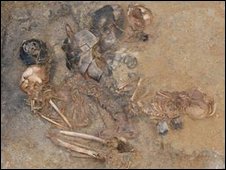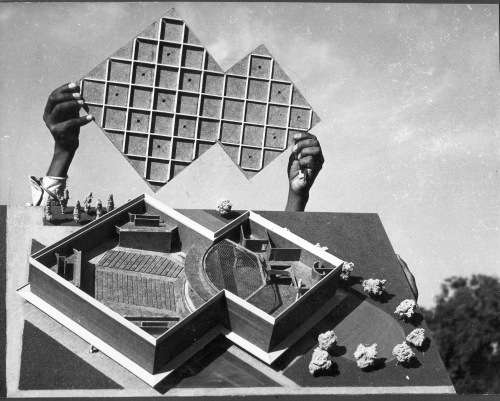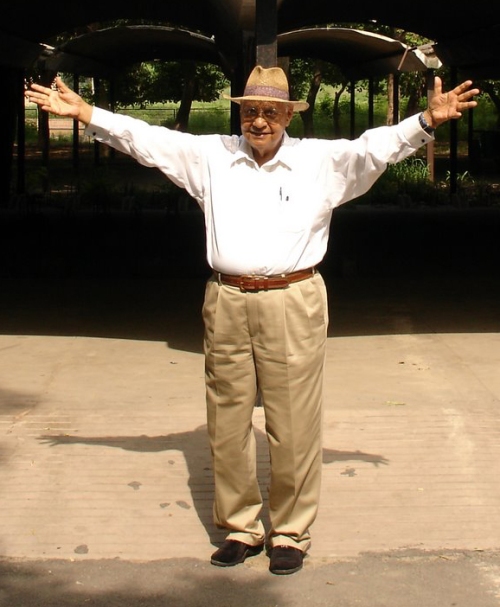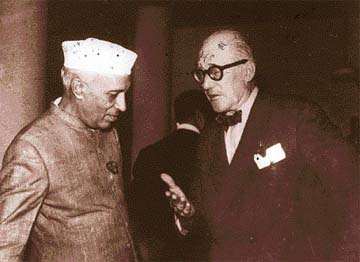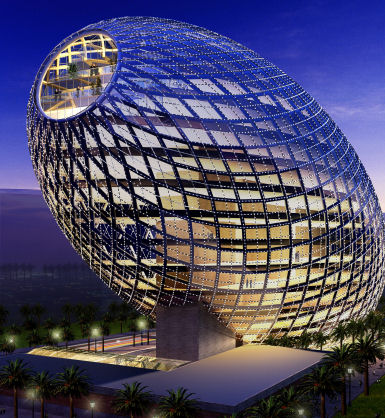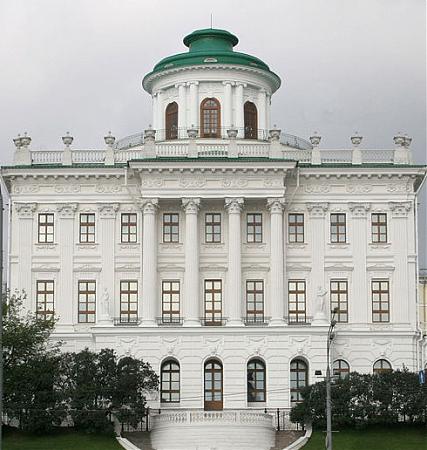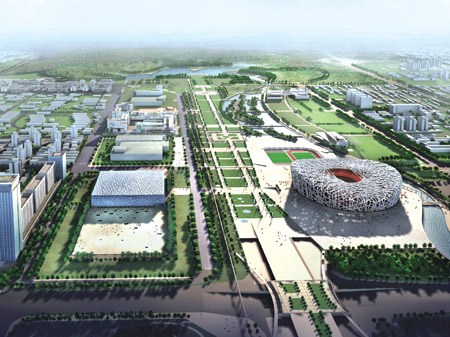Photo Source: Wikimedia Commons
Posted in Architecture, Landmark | Tagged Architecture, Skyscraper, Tall Buildings, Technology | 6 Comments »
Historians had believed modern-day Istanbul was first settled around 700 BC.
However, a grave that has been recently discovered at the site of a rail project instantaneously added 6000 years to Istanbul’s history.
“We found the grave, pots and other artifacts. There were signs of houses made of tree-branches and next to the settlement was a swamp where we found small tools, wooden pieces and bones,” explains Ismail Karamut, head of the Istanbul Archaeology museum, which is leading the dig.
“It all shows there was a Neolithic settlement here in the historic peninsula of Istanbul where people lived, farmed and fished,” he adds.
The Neolithic era – when man abandoned the nomadic, hunting lifestyle and settled to farm the land and raise cattle – began east of here, gradually carrying the foundations of “civilised” life west, to Europe. The new find in Istanbul helps map that transition.
“Neolithic culture changed as it moved west. Not all of what we call the ‘Neolithic package’ was transferred,” explains Professor Mehmet Ozdogan of Istanbul University.
“Domesticated animals and some of the cereal crops came, but mud brick became wooden architecture, settlements were re-organised. The transformation is important to understand the Neolithic culture in Europe. Every new site adds data to the picture.”
The team’s first major discovery was a section of the first city walls, believed to date back to Constantine I.
As anticipated, they also uncovered a 4th Century port – once the busiest in Byzantium – and the stunningly well-preserved remains of more than 30 wooden ships, many wrecked in storms in the 10th and 11th centuries.
“We’re expecting to find more – maybe a small settlement,” Yasar Anilir explains. “We have to remove the Byzantine ships first, then we can complete our dig.”
Posted in Architecture, Culture | Tagged Archaeology, Architecture, Culture, Istanbul, news | 2 Comments »
Tagore Theater of Chandigarh in India, designed by Ar. Aditya Prakash, is one of the master prices of modern architecture and symbolic of Chandigarh’s architecture style.
Dr Vikramaditya Prakash of University of Washington shares the very interesting story of how the Tagore Theater of Chandigarh was designed, built, and named. The key players here were Ar. Aditya Prakash, Le Corbusier, and his cousin Pierre Jeanneret along with famous film personalities Prithviraj Kapoor and Zul Vellani.
Tagore Theater has been redesigned. However, should it or rather can it still be called ‘Tagore Theater’? What defines building’s identity?
Posted in Architecture, Discussion | Tagged Aditya Prakash, Chandigarh, India, Le Corbusier, Modern Architecture, news, Pierre Jeanneret, Tagore Theater, Technology | Leave a Comment »
On August 12, 2008 city of Chandigarh (India) lost an eminent architect, designer, painter, a theater enthusiast, academician, Le Corbusier’s associate. He was Ar. Aditya Prakash.
News Release- Aditya Prakash, Indian Modernist
He was on his way to Mumbai for staging the play Life Never Retires, created by G.S. Channi, in which he played the central character. He died on the way, at Ratlam station.
Aditya Prakash is well known in the world of modern architecture as Le Corbusier’s associate in the planning, design and building of the Chandigarh Capital Project which was initiated by the first Prime Minister of India, Jawaharlal Nehru.
Known internationally for its architecture and urban planning, Chandigarh is home to numerous architectural projects of Le Corbusier, Pierre Jeanneret, Edwin Maxwell Fry, Jane Drew, Matthew Nowicki, and Albert Mayer. Nehru famously proclaimed Chandigarh to be “unfettered by the traditions of the past, a symbol of the nation’s faith in the future.”
Designed in a grid pattern, Chandigarh stands out from the rest of India with its clean lines, broad avenues and imposing government buildings built on a vast scale in concrete with columns, ramps, sculpted roof lines and screens to protect against the punishing sun.
Prakash joined the Chandigarh Capital Project in November of 1952 as one of the nine architects on the team. He had just finished studying architecture at the London Polytechnic, and became an A.R.I.B.A. in 1951.
Posted in Architecture, News Ink | Tagged Aditya Prakash, Architecture, Art, Chandigarh, India, Indian Modernist, Le Corbusier, Modern Architecture, Nehru, news, Painter, Paintings, Theatre | 10 Comments »
India has been on world architecture news for a while now. Antilla has hardly left the headlines, Cybertecture Egg has already taken a place on top.
Talk of intelligent design- this building will surpass all that fall in this category. You will see it built by 2010.
The concept. The concept was inspired by considering the world as an ecosystem allowing life to evolve. Elements of the design and intelligence systems will work together to give the building’s inhabitants the ‘best space to work in’.
The design. The 32,000 sq m egg-shaped building will accommodate 13 floors of offices bringing together “iconic architecture, environmental design, intelligent systems, and new engineering to create an awe-inspiring landmark in the city.”
Within the building, there will be a series of innovative systems such as ‘cybertecture health’ which is designed to keep track of the inhabitant’s health including blood pressure and weight. The data collected may be retrieved and sent to a doctor if deemed necessary.
Posted in Architecture, News Ink, Peoples' Places, Super-Architecture | Tagged Business, Cybertecture Egg, Green Architecture, Holistic Architecture, India, James Law Cybertecture International, Mumbai's Cybertecture Egg, news, Super-Architecture, Technology, Vijay Associate (Wadhwa Developers) | 10 Comments »
Construction plans for the site of Le Corbusier’s chapel of Notre Dame du Haut (1954) in Ronchamp (France) commissioned by the Association Oeuvre Notre Dame du Haut (the same organization that commissioned the chapel by Le Corbusier), has ignited a serious debate and disagreement between organizations seeking to preserve Le Corbusier’s legacy.
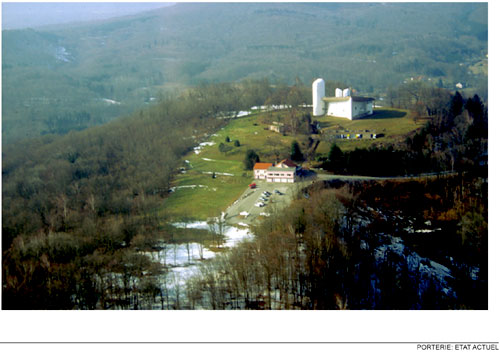
The New Plan. The new plan calls for the replacement of an existing visitor’s center and asphalt parking lot with a new visitor center dug into the hillside and a landscaped parking lot. It also features a new facility to host 12 Poor Clare nuns and their visitors. The convent—to be located primarily underground, about 300 feet west of the chapel—would contain small, independent residential units and an oratory open to pilgrims. According to the association, the overall goal of the project is to rehabilitate the site and ensure it remains a place of worship.
Posted in Architecture, Discussion, Historic Preservation, News Ink, Peoples' Places | Tagged Association Oeuvre Notre Dame du haut, Chapel of Notre Dame du Haut in Ronchamp, France, Historic Preservation, Le Corbusier, Le Corbusier Foundation, news, Renzo Piano, Richard Meier | 7 Comments »
Paskov House one of architectural jewels of Russia was under restoration for 19 years, was closed down due to its dilapidated state. Pashkov House is named after its first owner Petr Yegorovich Pashkov, the lieutenant commander of the Life Guards of Semenovsky Regiment and the son of Peter the Great’s batman.
Designed by Vasily Bazhenov (1737-1799), one of Russia’s greatest architects, this mansion was erected between 1784 and 1786 for the wealthy Pashkov family. The central building is topped by a round belvedere and flanked by two service wings. The current building is a reconstruction of a private mansion that was badly damaged in the disastrous fire of 1812, which swept through the city as the first of Napoleon’s troops were arriving.
In the 19th century it housed the Rumyantsev collection of art and rare manuscripts and a library, and from 1925it has been a part of the Lenin Library, the second largest in the world, after the Library of Congress, and a magnet for international scholars, even during the Soviet era. Following the 1917 revolution, the museum was closed and the art collection was transferred to the Hermitage in St. Petersburg and the Pushkin Museum of Fine Art. The manuscripts were donated to the Russian State Library which now owns this building. Pashkov House is off-limits to the general public, but after years of neglect, the government finally pledged funds for restoration work, which began in 2003. Money for the state-financed restoration finally started to flow after the visit from Vladimir V. Putin, the former president.
In a city where architectural monuments are readily torn down or gaudily renovated beyond recognition, Pashkov House, which reopened in October after an $80 million renovation, is one of the few restoration projects lauded by preservationists.
Posted in Architecture, Historic Preservation, News Ink, Peoples' Places | Tagged Architecture, Historic Preservation, History, news, Pashkov House, Putin, Russia Moscow | 5 Comments »
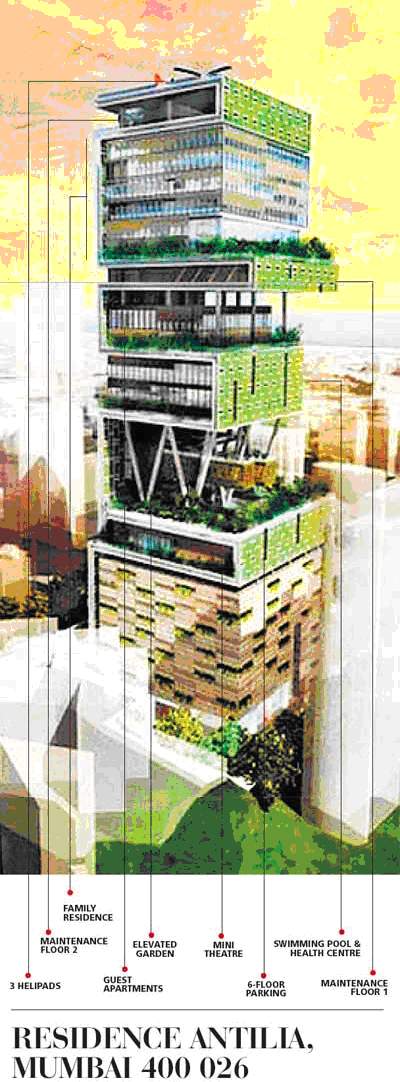 To everyone’s surprise, price tagged at $ 2 Billion, Antilla (named after the mythical island) is in India and is world’s first billion dollar home. Indeed, like its name, it houses stuff that surrounds myth!
To everyone’s surprise, price tagged at $ 2 Billion, Antilla (named after the mythical island) is in India and is world’s first billion dollar home. Indeed, like its name, it houses stuff that surrounds myth!
Owner is India’s richest, Mukesh Ambani of Reliance fame whose net worth was 43 Billion in March of this year and was the 5th richest in the world.
The only remotely comparable high-rise property currently on the market is the 70 million dollar triplex penthouse at the Pierre Hotel in New York, designed to resemble a French chateau, and climbing 525 feet in the air.
When the Ambani residence is finished in January, completing four years of design and construction, it will be 27 story and 550 feet high (height which normally houses 60 floors) with 400,000 square feet of interior space. (Click on the picture to see a video).
However, all of this has not been without its share of controversies. Antilla is being built on land sold to Ambanis’ to be used as orphanage by Waqf Board.The land measuring 11793 sq yards was sold in 2004 by the trust for a charitable purpose of looking after the destitutes and orphan children belonging to the Khoja Mohammedan community. The land was given to the Maharashtra State Board of Waqf by Jivagi Raje Scindia in 1957. The MoU was signed with four companies namely Antillia Commercials, Saphire Realtors, Rockline Constructions and Baun Foundation trust.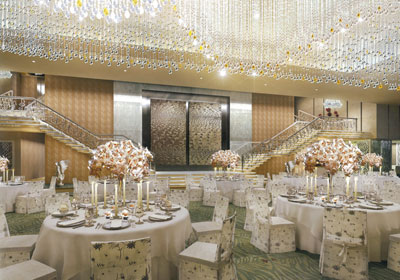
The Waqf Board has told the Supreme Court that it sold the property thinking it was to be used for an orphanage and that commercial buildings are not allowed on Waqf land. Property having a market value of Rs 400 crore was sold only for Rs 21.05 cr to M/s Antillia Commercial, a company of Reliance group of Industries. Rs 16 crores were also paid to Waqf Board for No Objection Certificate.
The Supreme Court on Friday decided not to intervene in the construction of the building on Waqf board land in Mumbai and has directed the matter back to the Bombay high court.
Critics have also said that showing off such extravagant wealth in a country rife with poverty is insensitive and ethically questionable. This is excessive and ostentatious given that more than 65 percent of Mumbai’s 18 million residents live in tenements.
Posted in Architecture, Green Architecture, News Ink, Super-Architecture | Tagged Architecture, Design, Green Architecture, Hirsch Bedner Associates, India, Mansion In Air, Mukesh Ambani, news, Nita Ambani, Perkins + Will, Reliance, Technology, World's First Billion Dollar Home | 8 Comments »
Seventy-five years ago, in Los Angeles, with a no-interest loan from Dutch philanthropist Dr CH Van Der Leeuw, Viennese-American architect Richard Neutra, rightly called ‘second only to Frank Lloyd Wright’, built a radical “glass house” with rooftop and balcony gardens on Silverlake Boulevard.
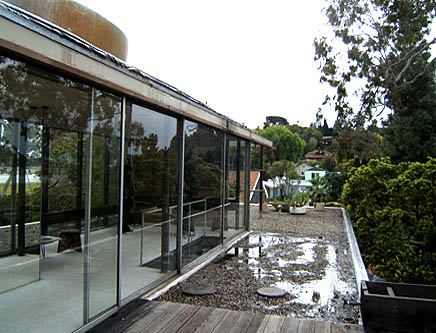
This is the place where Neutra had designed hundreds of projects over the four continents among which are some of the finest schools, public buildings and distinguished residences. So many architects were trained here and whose careers started in this office/studio.
Neutra’s residence played host to cultural figures like Frank Lloyd Wright, Lazlo Moholy Nagy, Jorn Utson, Charles and Ray Eames; religious figures like Robert Schuler and J Krishnamurti; scientists like Rene Dubos and Linus Pauling; and to political figures and activists like John Anson Ford, Frank Wilkinson and Vice President Hubert Humphrey.
VDL, as Neutra had named his residence, was very dear to him. His ashes were later scattered in the backyard.
Posted in Architecture, News Ink, Peoples' Places | Tagged Architecture, Cultural Heritage, Culture, Dione Neutra, Historic Preservation, news, Richard Neutra, VDL, VDL Research Site | 6 Comments »
The idea of designers and architects working together is nothing new, from the Tokyo store collaboration between Prada and Rem Koolhaas to Hussein Chalayan’s techno virtuosity in morphing dresses into chairs.
We all live in buildings and wear clothes. Traditionally, fashion and architecture have remained quite distinct. However, since 1980s the two disciplines have become closer than ever before.
Posted in Architecture, Culture, News Ink | Tagged Architecture, Art, Eva Jiricna, Fashion, Frank Gehry, London's Somerset House, news, Parallel Practices in Fashion and Architecture, Prada, Rem Koolhass, Skin + Bones, Technology, Zaha Hadid | 3 Comments »
Beijing’s $500-million Olympic stadium opens its doors to the media. Finishing touches are still being added to the 91000 seat venue.
Bird’s Nest, as it has been nicknamed, cost more than 500 million US Dollars and took fours years to build. It is called ‘Bird’s Nest’ due to the structural form of its roof. The interwoven structural elements of the facade produce a single surface, upon which further elements are arranged in a chaotic manner to blur the distinction between the primary structure and the secondary structure. The roof is saddle-shaped, and the geometry is developed from a base ellipse of which the major and minor axes are 313 meters and 266 meters respectively. The outer surface of the facade is inclined at approximately 13° to the vertical.
Posted in Landmark, News Ink, Peoples' Places, Super-Architecture | Tagged 2008 Olympics, Ai Weiwei, Beijing, Bejing Stadium Design Competition, Bird's Nest, China, Guangdong Olympic Stadium, Herzog & de Meuron, news, Olympic Games, Olympic Stadium, Solar PV System, Sports, Stadium, Technology, Video | 8 Comments »

